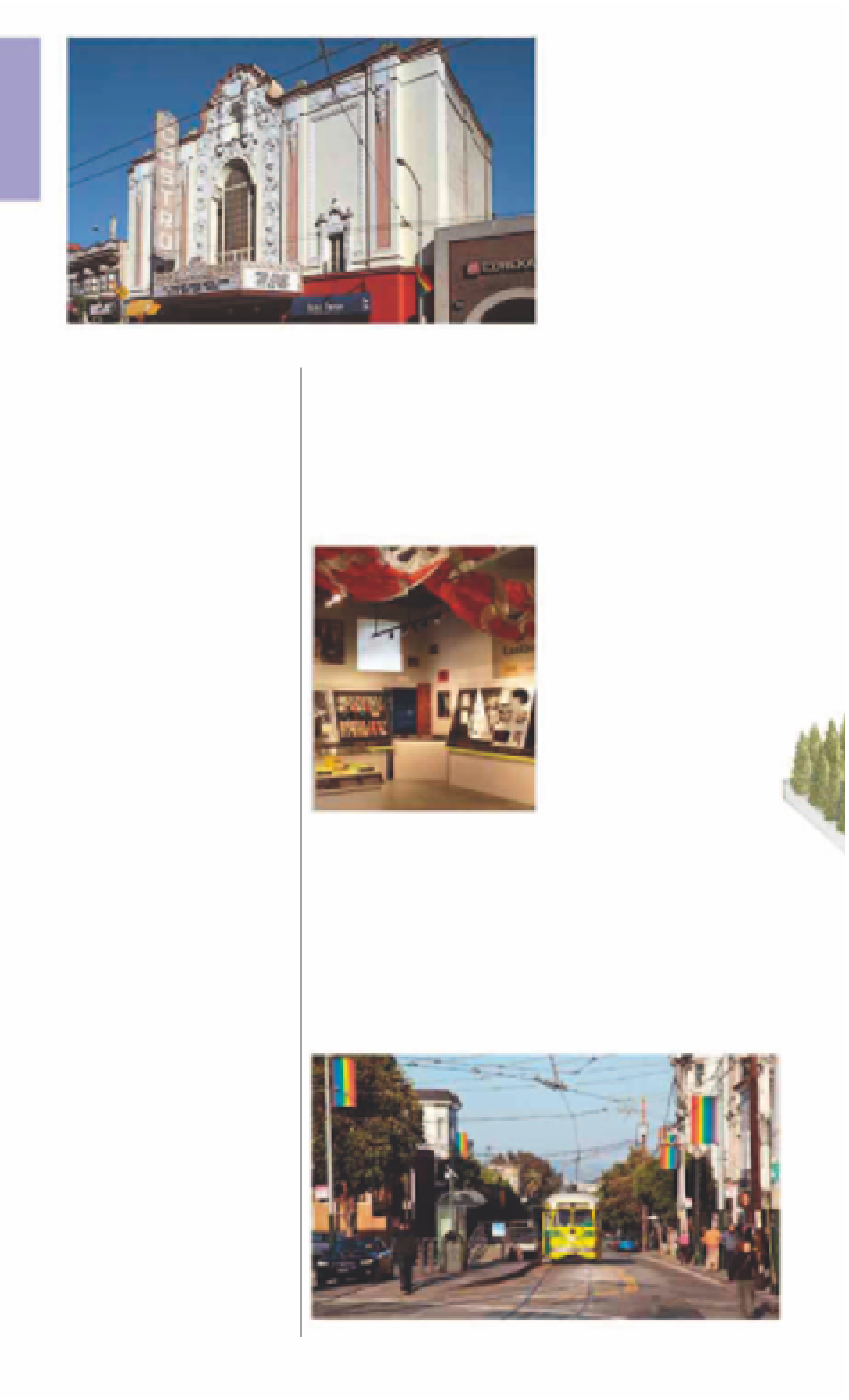Travel Reference
In-Depth Information
high-profile gay and lesbian
community. Focused on the
intersection of Castro Street and
18th Street, the self-proclaimed
“Gayest Four Corners of the
World” emerged as a
homosexual nexus during the
1970s. Gays of the Flower Power
generation moved into this
predominantly working-class
district and began restoring
Victorian houses and setting
up such businesses as the
bookstore A Different Light, at
489 Castro Street. They also
opened such gay bars as the
Twin Peaks on the corner of
Castro Street and 17th Street.
Unlike earlier bars, where
lesbians and gays hid in dark
corners out of public view, the
Twin Peaks installed large
windows. Though the many
shops and restaurants attract all
kinds of people, the Castro's
openly homosexual identity has
made it a place of pilgrimage
for gays and lesbians. It
symbolizes for this minority
group a freedom not generally
found in cities elsewhere.
In the 1970s, a man named
Harvey Milk championed the
rights of the gay community in
the Castro district, earning the
title Mayor of Castro Street. He
went on to become the first
elected openly gay politician in
California but was assassinated
on November 28, 1978. He and
Mayor George Moscone were
killed by an ex-policeman,
whose lenient sentence
caused riots in the city. Milk is
remembered by a memorial
plaque outside the station
on Market Street, and by an
annual candlelit procession
from Castro Street to City Hall.
The historic Castro Theatre
7
Castro Theatre
429 Castro St.
Map
10 D2.
Te l
621-
6120.
@
24, 33, 35, 37.
v
F, K, L, M, T.
See Entertainment p262.
∑
thecastrotheatre.com
of the city's vast queer past
through dynamic and surprising
exhibitions and programming.
Discover treasures from the
archives of the GLBT Historical
Society that reflect the
fascinating stories of this
vibrant community.
Completed in 1922, this brightly
lit neon marquee is a Castro
Street landmark. It is the most
sumptuous and best preserved
of San Francisco's neighborhood
film palaces, and one of the first
commissions of the architect
Timothy Pflueger. With its lavish,
Arabian Nights interior,
complete with a glorious
Wurlitzer organ that rises from
the floor between screenings,
it is well worth the price of
admission. The ceiling of the
auditorium is particularly
noteworthy; it is cast in plaster
and resembles the interior of a
large tent, with imitation
swathes of material, rope, and
tassels. The theater seats 1,400
and shows mainly revival
classics. It also hosts the Gay
and Lesbian Film Festival,
held each June
(see p51)
.
GLBT History Museum
9
Castro Street
Map
10 D2.
@
24, 33, 35, 37.
v
F, K ,
L, M, T.
The hilly neighborhood around
Castro Street between Twin
Peaks and the Mission District
is the heart of San Francisco's
8
GLBT History
Museum
4127 18th St.
Map
10 D3.
Te l
621-
1107.
@
24, 33, 35, 37.
v
KT, F, L, M,
S.
Open
11am-7pm Wed-Mon
(noon-5pm Sun).
Closed
Tue.
∑
glbthistory.org
This is the first full-scale, stand-
alone museum devoted to the
evolution of the liberation of
the gay, lesbian, bisexual, and
transgender community in the
United States. Though fairly
small, the museum packs a
punch, celebrating 100 years
View down Castro Street




































